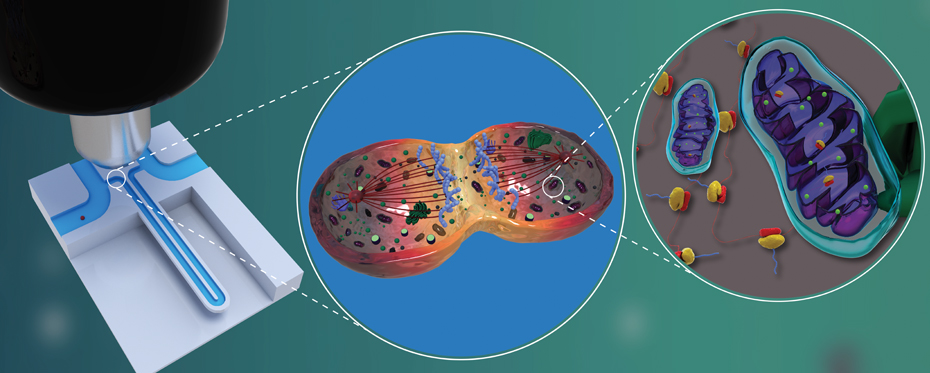Tag: metabolism
Barth syndrome: A potential treatment for a rare disease

Barth syndrome is a rare disorder in males caused by a variant of the gene TAFAZZIN. It affects the metabolism of the fat molecule cardiolipin in mitochondria, resulting in the dysfunction of skeletal muscle and the heart. The syndrome doesn’t have a specific therapy, so patients who suffer from it have health problems their entire lives and are more likely […]
Read More… from Barth syndrome: A potential treatment for a rare disease
Obesity and inflammation: A recipe for depression in women

A team led by Dr Julie Pasco, Professor of Epidemiology at Deakin University and Barwon Health, Australia, analysed data from the longitudinal Geelong Osteoporosis Study over 16 years. The researchers discovered that metabolically unhealthy obesity, defined by low-grade inflammation in combination with obesity, puts women at higher risk of developing depression. These novel findings highlight inflammation as both a key […]
Read More… from Obesity and inflammation: A recipe for depression in women
Spiking of urinary biomarker with exercise: A marker of muscle inflammation?

Seeking a sensitive biomarker of inflammation, Emeritus Professor Isao Okayasu of Kiryu University and Kitasato University, Japan and his colleagues have spent over two decades investigating chronic organ inflammation and its links to cancer. They have developed methods to measure prostaglandin E-major urinary metabolite (PGE-MUM) as a surrogate marker, which has opened the door for its investigation in different physiological […]
Read More… from Spiking of urinary biomarker with exercise: A marker of muscle inflammation?
Metabolic dysfunction: The liver and beyond

The liver is the centre of our metabolism, with metabolic dysfunction playing a pivotal role in liver diseases and type 2 diabetes. Despite extensive study, the mechanisms underlying these pathologies remain largely unexplained. Professor Philipp Kaldis of Lund University, Sweden, has collaborated with fellow researchers to investigate the role of metabolites during metabolic dysfunction in these diseases. Motivated by the goal […]
How can diet influence women’s reproductive health?

The majority of clinical trials focus on male participants. Dr Dequina Nicholas, Assistant Professor at the University of California Irvine in the US, argues that there is an urgent need to focus more on women’s health, especially fertility-related complications. She is exploring the impact of what we eat on metabolism, inflammation, and reproduction, expanding the possibility that dietary manipulation can […]
Read More… from How can diet influence women’s reproductive health?
Improved formulations of nicotinamide riboside: A promising treatment for age-related disorders

Nicotinamide adenine dinucleotide (NAD+) is a co-enzyme involved in fundamental metabolic roles. Its levels decrease with aging, causing the development of age-related pathologies. NAD+ levels can be replenished by the intake of nicotinamide riboside (NR), a vitamin B3 analogue, which is naturally converted to NAD+. Regular use of NR supplementation is associated with improved outcomes in several cardiovascular, neurodegenerative, and […]
Novel mouse models shed light on role of omega-6/omega-3 imbalance in chronic disease

The link between two classes of essential fatty acids – omega-3 and omega-6 – and health has, until now, been unclear. This is partly because it has been difficult for researchers to define exactly what each does in the body. To address this problem, Dr Jing X. Kang of Massachusetts General Hospital and Harvard Medical School, USA, developed novel strains […]
Unravelling the secrets of the cell with suspended microchannel resonators

Researchers can learn much about the properties of many materials simply by weighing them. In cell biology, repeatedly measuring the mass of a cell reveals how fast the cell grows. However, this is very challenging: the mass of a single-cell is extremely difficult to measure with enough accuracy and without perturbing the cell. The laboratory of Dr Scott Manalis at […]
Read More… from Unravelling the secrets of the cell with suspended microchannel resonators
Using metabolomics and artificial intelligence to explore the universe of the dark metabolome

Professor David Wishart, University of Alberta, is a member of Canada’s national metabolomics laboratory and leads the Human Metabolome Project. His work aims to identify and catalogue metabolites in human tissues, biofluids and the surrounding environment. He has developed a software package called BioTransformer, which is a chemical prediction tool to explore the mysterious dark metabolome. The program combines artificial […]